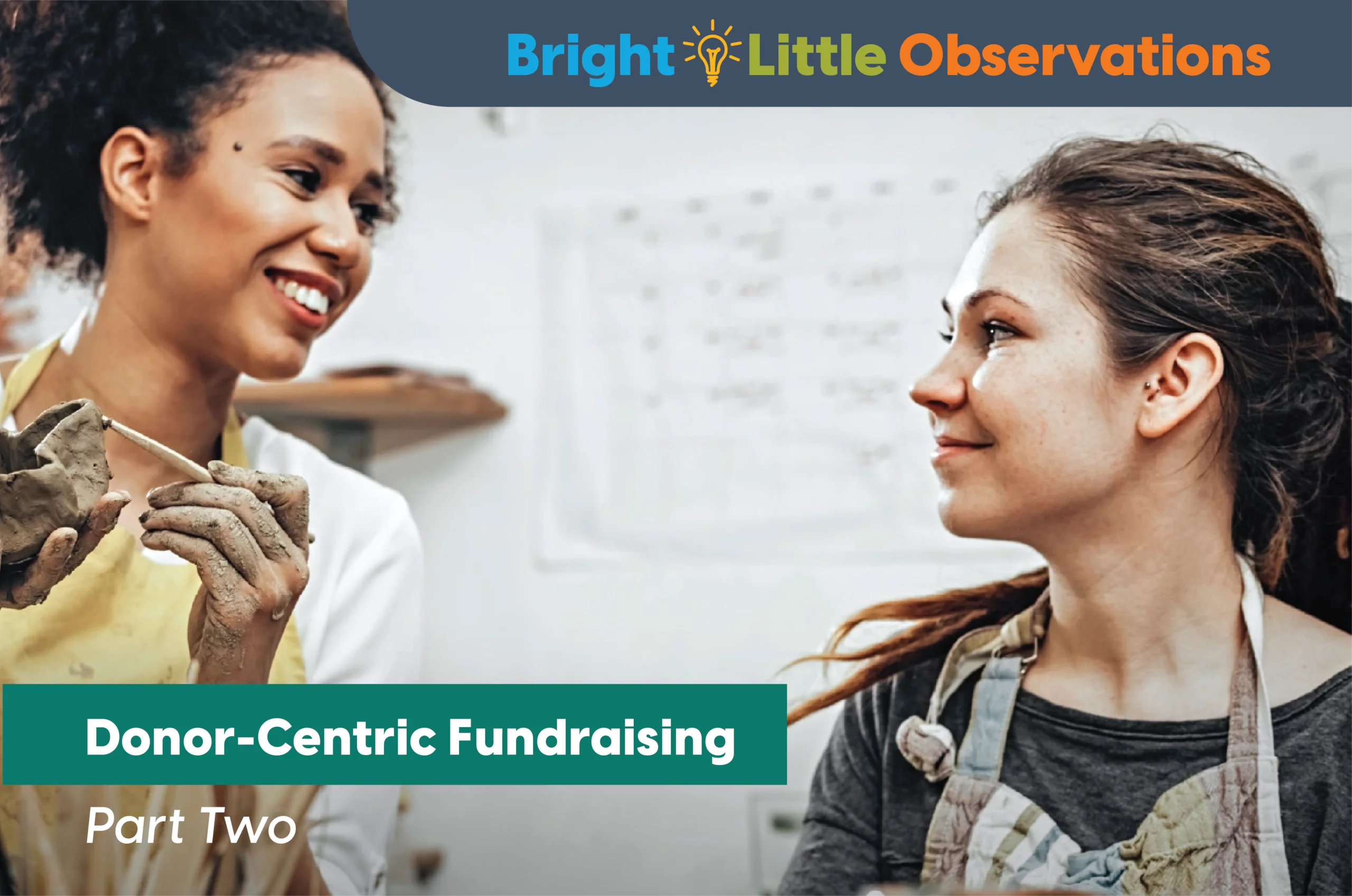


In Part One of “Is Your Organization “Donor-Centric?” we looked at how to create a donor-centric culture, which sets the foundation for a curbing donor attrition and maintaining and growing a strong donor base.
Today in Part Two, we’ll discover how to Create a Donor-Centric Experience.
2. Create a Donor-Centric Experience
“By making an initial gift, donors are ultimately raising their hands,” says Brian Smith, Summit Marketing’s Director of Engagement. “They are indicating they share your mission and are curious about how they might become part of it. That’s when the donor-centric experience begins. The objective is to develop a deeper connection with donors that will transform their lives while building a collaboration that transforms your organization as well.”
Drawing on donors’ human desire for acknowledgement, affirmation, appreciation and aspiration, you can create a 4-Pillar Plan – a series of intentional attention touchpoints that will fulfill their needs and cement their relationship with your nonprofit.
Pillar 1: Acknowledgement
Respond to every gift in a timely manner. Donors want to know not only that their contributions have been received, but also that they are making an impact to further your shared vision. In addition to acknowledging the gift itself, be sure to also recognize the donor’s intention and sacrifice.
Intentional attention tools:
- Welcome letter
- Hand-written thank-you note
- Personal phone call
Research shows that first-time donors who receive a thank-you within 48 hours of giving are four times more likely to give again. This extensive bump in donor retention forms the foundation for donor-centric fundraising.
Pillar 2: Affirmation
Don’t forget about donors between fundraising appeals and campaigns. Surprise and delight them with reminders that they are important to you – not their generosity, but the donors themselves. Take time to get to know them, tell them more about your organization and ask for their opinions and suggestions.
Intentional attention tools:
- Surveys & questionnaires
- Encourage prayer requests
- Remember birthdays and other events
Pillar 3: Appreciation
Actions speak louder than words. Take special steps to ensure your donors know they’re not taken for granted and that their efforts and partnership are celebrated. Honor them with introductions to others in your community of supporters, further strengthening their bond with your organization.
Intentional attention tools:
- Appreciation events
- Community recognition (be sure to ask permission before recognizing donors publicly)
- Personal gifts (inexpensive)
Pillar 4: Aspiration
Your donors desire to make a difference … to do something meaningful with their lives.
Provide opportunities to do something that makes an impact … then affirm their efforts mattered. As your donors feel the joy of fulfilling their goals and dreams (and in many cases, their calling) your organization will be transformed as well … transforming the lives of others.
Intentional attention tools:
- Share program/facility needs
- Tours to witness generosity in action
- Encourage legacy giving/estate planning
The essence of the donor-centric experience
Imagine meeting someone new who shares your passions, interests and ideals. You know you would be a blessing in one another’s lives, so how do you grow that friendship?
You take time to learn all about her – her family, background, goals and dreams. You listen to her concerns and celebrate her achievements. You let her know you’re thinking about her. You remind her how important she is. You show her how much she’s loved. Through the bond of your shared mission and vision, you help her fulfill her legacy.
In return, she’s there for you, too. She has your back. You can count on her support.